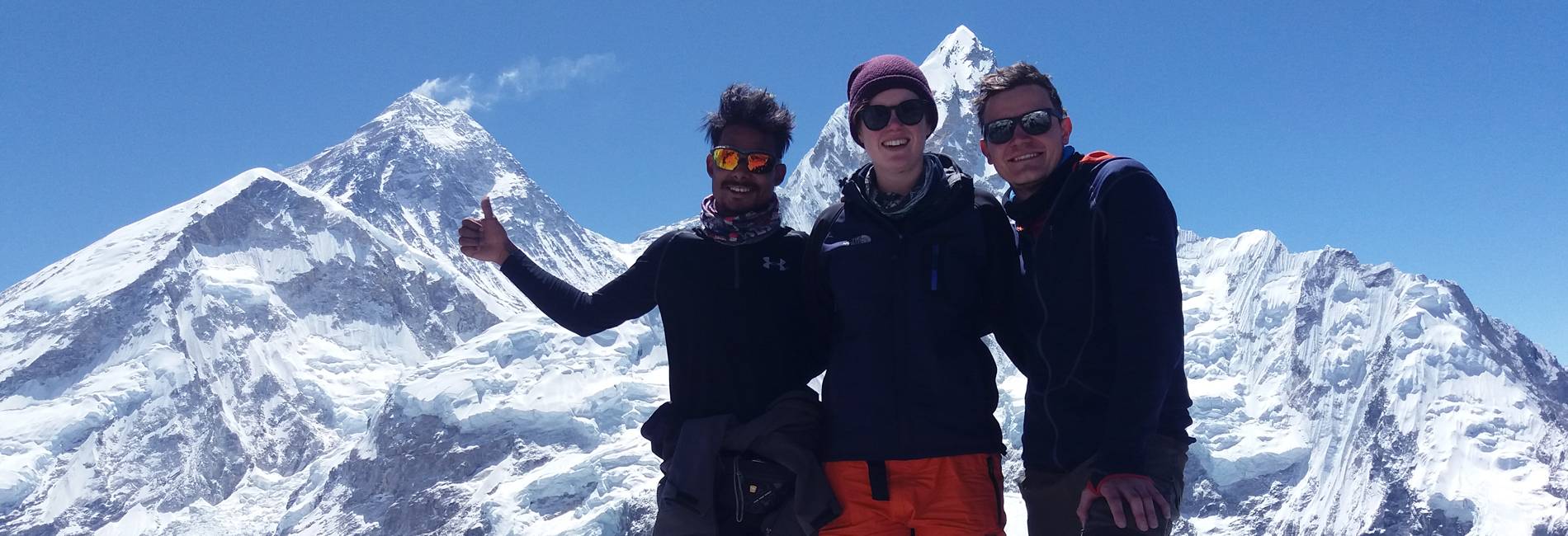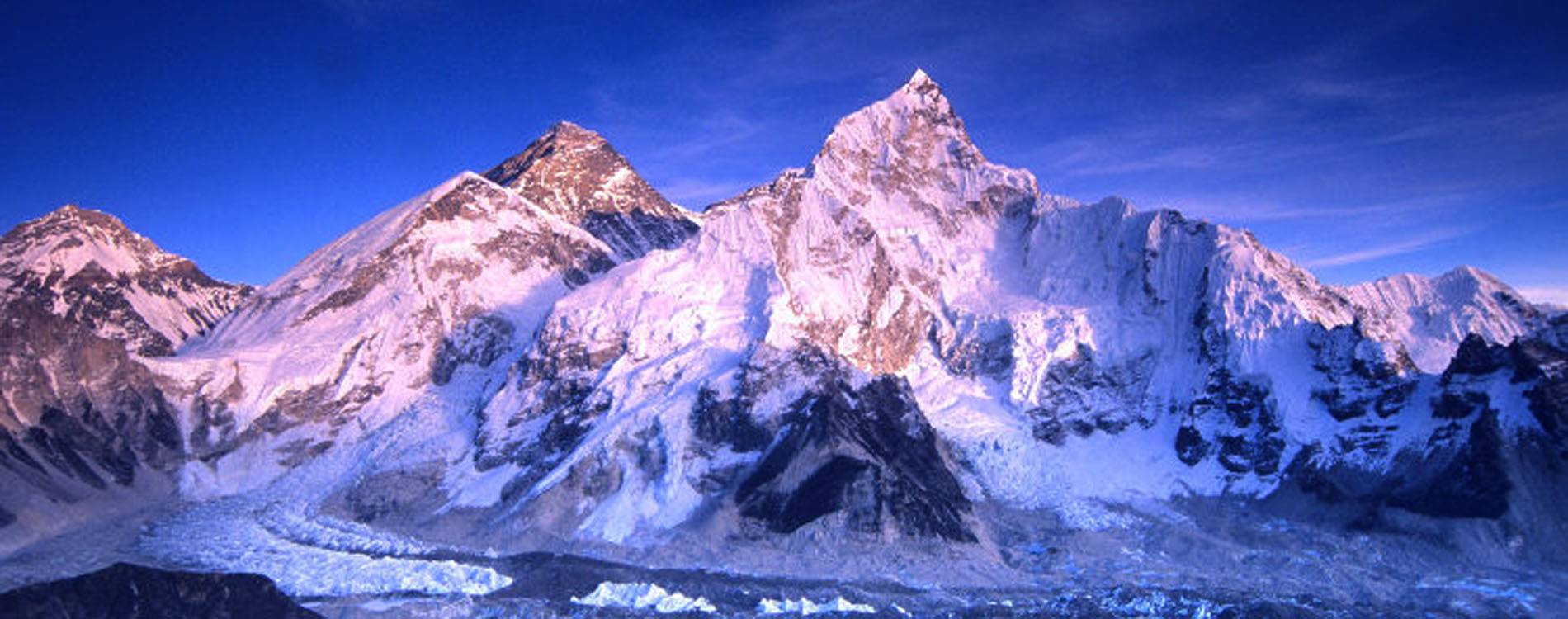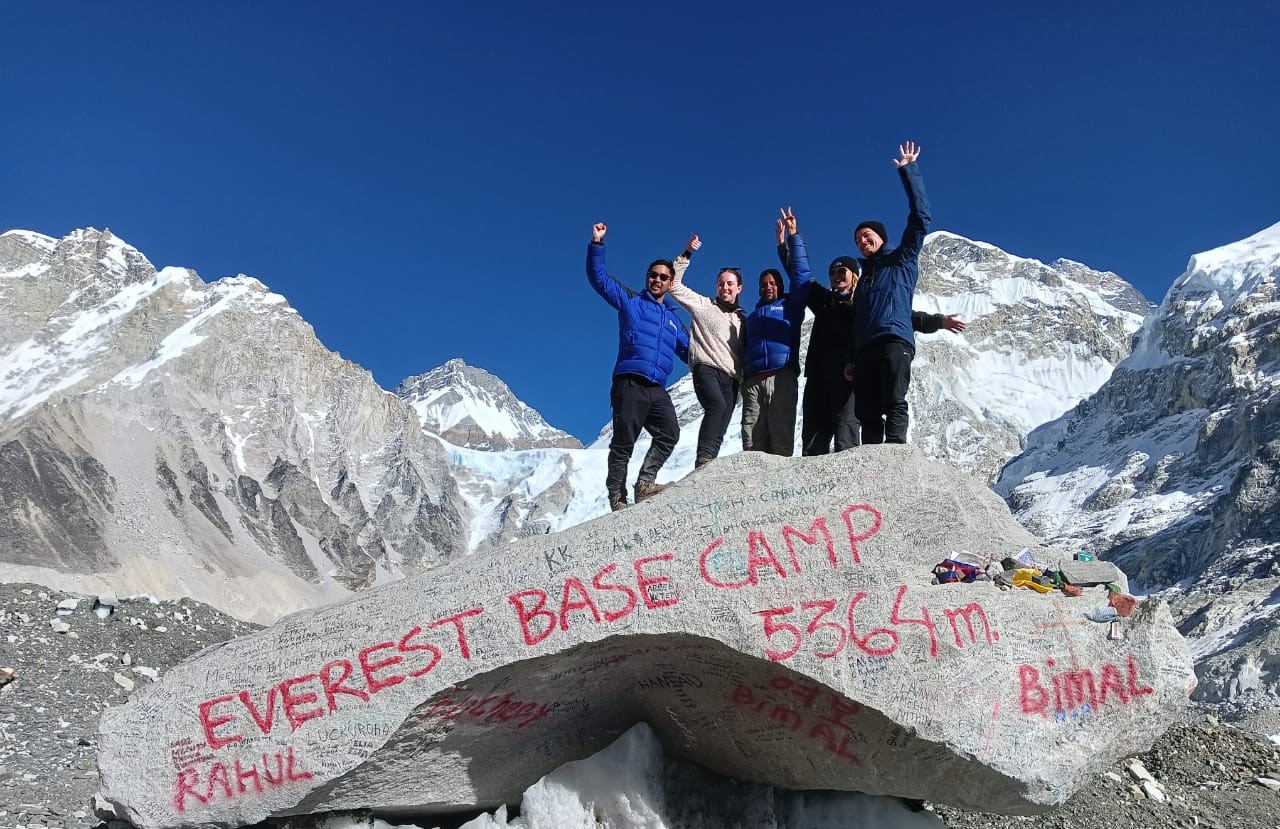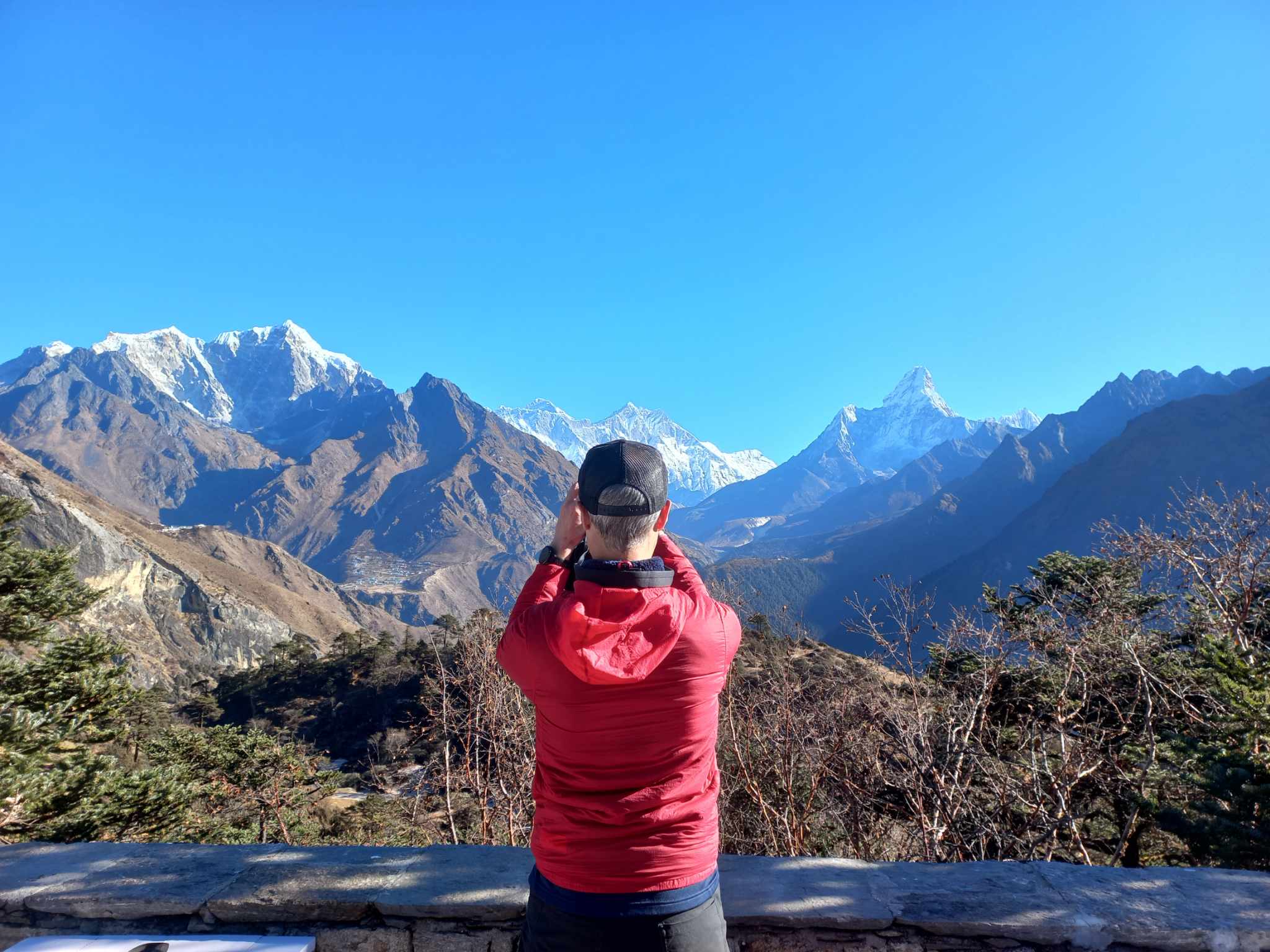26th August, 2025

Feb 16, 2024
Everest Base Camp Trek Guide Everything You Need to Know
Embarking on the Everest Base Camp (EBC) trek is a dream for many adventure enthusiasts. This thrilling journey takes you through breathtaking landscapes, introduces you to the unique Sherpa culture, and ultimately rewards you with the awe-inspiring sight of the world's highest peak, Mount Everest. In this comprehensive guide, we will provide you with all the essential information you need to make your EBC trek a memorable and successful experience.
Trekking Route and Duration:
The classic EBC trek typically begins and ends at Lukla, a small town in the Khumbu region of Nepal. The trek generally takes about 12-14 days, allowing for acclimatization along the way. We'll outline the key points of interest and milestones you'll encounter during your journey.
Physical Fitness and Training:
Preparing yourself physically and mentally is crucial for a successful EBC trek. We'll provide you with tips on how to train, improve your stamina, and ensure that you are in good health before embarking on this challenging adventure.

EVEREST BASE CAMP TREK
Cross this off your “bucket list” – a “dream come true experience”Everest is the ultimate goal of many people and those who had already been there rating it as one of the best experiences of their liv...
Permits and Regulations:
To trek to Everest Base Camp, you'll need certain permits and adhere to specific regulations. We'll guide you through the process of obtaining the necessary permits and inform you about the conservation fees required for entry into the Sagarmatha National Park.
Accommodation and Facilities:
During the trek, you'll find a variety of accommodation options, ranging from guesthouses to teahouses. We'll discuss the facilities available, including food, water, and hygiene considerations that will help you plan and manage your stay along the trekking route.
Altitude Sickness and Acclimatization:
Altitude sickness is a real concern during the EBC trek due to the high elevation. We'll provide you with essential information on recognizing symptoms, preventive measures, and acclimatization techniques to ensure a safe and enjoyable journey.
Weather and Best Time to Trek:
Choosing the right time to trek is crucial for a pleasant experience. We'll outline the different seasons and weather conditions, helping you decide when to embark on your adventure based on your preferences and the challenges each season presents.
Ultimate Everest Base Camp Trek Itinerary: 14 Days
Embarking on the Everest Base Camp (EBC) trek is a remarkable adventure that takes you through stunning landscapes, remote Sherpa villages, and ultimately, to the base of the world's highest peak. In this ideal 14-day itinerary, we'll guide you through the most popular and rewarding route, allowing you to fully immerse yourself in the beauty and culture of the Everest region.

14 DAYS EVEREST BASE CAMP TREK
For those with an adventurous spirit and a need for a personal challenge to one of the world’s most spectacular places.Our 14 day Everest Base Camp Trek (EBC Trek) is the most popular trek in the...
Day 1: Arrival in Kathmandu:
Arrive in Kathmandu, the capital city of Nepal. Take some time to explore the vibrant streets and prepare for the trek ahead. Acquire any necessary permits and meet your guide for a trek briefing.
Day 2: Fly to Lukla, Trek to Phakding (2,652m/8,700ft):
Take an early morning scenic flight to Lukla and begin your trek. Trek through lush forests, cross suspension bridges, and reach the riverside village of Phakding for an overnight stay.
Day 3: Phakding to Namche Bazaar (3,440m/11,286ft):
Continue along the Dudh Koshi River, crossing more suspension bridges. Ascend through pine forests and arrive at Namche Bazaar, the gateway to the Everest region. Enjoy stunning views of Everest and surrounding peaks.
Day 4: Acclimatization Day in Namche Bazaar:
Spend a day acclimatizing in Namche Bazaar. Explore the vibrant market, visit the Everest View Hotel for panoramic mountain views, and hike to the nearby villages of Khumjung and Khunde to experience Sherpa culture.
Day 5: Namche Bazaar to Tengboche (3,870m/12,694ft):
Trek along the rhododendron forests, enjoying breathtaking views of Ama Dablam and other Himalayan peaks. Reach Tengboche, home to the famous Tengboche Monastery, where you can witness evening prayers.
Day 6: Tengboche to Dingboche (4,360m/14,300ft):
Descend through forests and cross the Imja Khola. Trek through picturesque villages and arrive at Dingboche, known for its stunning views of Lhotse, Island Peak, and other peaks.
Day 7: Acclimatization Day in Dingboche:
Take a day to acclimatize in Dingboche. Opt for a short hike to Nagarjun Hill or Chhukung village for breathtaking views of the surrounding mountains.
Day 8: Dingboche to Lobuche (4,940m/16,207ft):
Continue ascending through the Khumbu Valley, passing memorials for climbers who lost their lives on Everest. Trek along the lateral moraine of the Khumbu Glacier and reach Lobuche for an overnight stay.
Day 9: Lobuche to Gorak Shep (5,160m/16,929ft) and Everest Base Camp (5,364m/17,598ft):
Trek to Gorak Shep, the last settlement before Everest Base Camp. After a short rest, continue to Everest Base Camp, an exhilarating experience. Enjoy the close-up views of the Khumbu Icefall and surrounding peaks. Return to Gorak Shep for the night.
Day 10: Hike to Kala Patthar (5,545m/18,192ft), Descend to Pheriche (4,240m/13,910ft):
Early morning hike to Kala Patthar for stunning sunrise views of Everest, Lhotse, and other peaks. Descend to Pheriche for an overnight stay.
Day 11: Pheriche to Namche Bazaar:
Trek back along the same trail, enjoying the familiar landscapes and descending to Namche Bazaar for a well-deserved rest.
Day 12: Namche Bazaar to Lukla:
Continue descending through forests and villages, crossing suspension bridges, and finally reaching Lukla. Celebrate the completion of your trek with your guide and fellow trekkers.
Day 13: Fly from Lukla to Kathmandu:
Take an early morning flight back to Kathmandu. Spend the day exploring the city, shopping for souvenirs, or simply relaxing.
Day 14: Departure:
Bid farewell to the majestic Himalayas as you depart from Kathmandu, taking with you unforgettable memories of your Everest Base Camp trek.

EVEREST BASE CAMP TREK 7 DAYS
For those with an adventurous spirit and a need for a personal challenge to one of the world’s most spectacular places. The Everest Base Camp Trek gives you a great opportunity to explore a unique hig...
Packing Lists For Everest Base Camp Trek
Packing for the Everest Base Camp trek requires careful consideration to ensure you have everything you need while keeping your backpack as light as possible. Here's a comprehensive packing list to help you prepare for the journey:
Clothing:
- Base layer tops and bottoms (thermal or moisture-wicking)
- Insulated mid-layer (fleece or down jacket)
- Waterproof and windproof outer shell jacket
- Waterproof and windproof pants
- Trekking pants (quick-drying and comfortable)
- Long-sleeve shirts (lightweight and breathable)
- T-shirts (moisture-wicking)
- Underwear (moisture-wicking)
- Sports bras (for women)
- Warm hat or beanie
- Buff or neck gaiter
- Gloves or mittens (insulated and waterproof)
- Hiking socks (wool or synthetic)
- Liner socks (to prevent blisters)
- Hiking boots (broken in and comfortable)
- Camp shoes or sandals (for resting in teahouses)
Accessories:
- Sunglasses (with UV protection)
- Sun hat or cap
- Headlamp (with spare batteries)
- Trekking poles (adjustable and lightweight)
- Sleeping bag (rated for cold temperatures)
- Sleeping bag liner (for added warmth and cleanliness)
- Backpack rain cover
- Daypack (for shorter hikes and personal items)
- Dry bags or ziplock bags (to keep belongings dry)
- Water bottle or hydration bladder
- Water purification tablets or filter
- Snacks and energy bars
- Personal first aid kit (including blister treatment, pain relief, and any necessary medications)
- Toiletries (toothbrush, toothpaste, biodegradable soap, etc.)
- Quick-dry towel
- Sunscreen (with high SPF)
- Lip balm (with SPF)
- Hand sanitizer
- Trekking map and guidebook
- Camera and spare batteries
- Portable charger or power bank
- Travel adapter (for charging electronics)
Miscellaneous:
- Cash (Nepalese rupees) for meals, drinks, and souvenirs along the trek
- Identification documents (passport, permits, and insurance papers)
- Travel insurance information
- Trekking permits (Sagarmatha National Park Permit and TIMS card)
- Snacks and treats for the local children or guides
Note: It's important to pack light and prioritize essential items. You can also rent or purchase equipment in Kathmandu or Namche Bazaar if needed. Don't forget to consider the weight restrictions for flights to Lukla, which is usually around 15-20 kg (33-44 lbs) including both checked and carry-on luggage.
Hiring Guides and Porters:
While it is possible to trek to Everest Base Camp independently, hiring a guide or porter can greatly enhance your experience. We'll discuss the benefits of having a local guide and porter, how to hire them, and what to expect in terms of services and costs.

EVEREST BASE CAMP TREK CHOPPER RETURN
Embark on an unparalleled Everest Base Camp Trek with a Helicopter Return, a one-of-a-kind adventure that seamlessly merges the excitement of trekking in the grand Himalayas with the opulence of a hel...
Safety Tips and Precautions:
Safety should always be a top priority during any trekking adventure. We'll share valuable safety tips, including information on travel insurance, emergency contacts, and precautions to take while on the trail.
Environmental Considerations:
Preserving the natural beauty of the Everest region is of utmost importance. We'll highlight the Leave No Trace principles and provide tips on how to minimize your impact on the environment during your trek.
Conclusion
Embarking on the Everest Base Camp trek is a once-in-a-lifetime experience that requires careful planning and preparation. With this comprehensive guide, you now have all the information you need to make your EBC trek a safe, enjoyable, and memorable adventure. Get ready to witness the majestic beauty of the Himalayas and create memories that will last a lifetime. Happy trekking!

EVEREST PANORAMA TREK
Top of the world experience – soaring snow-clad peaks & the rich spiritual homeland of the Tibetan Sherpa people.The Everest Panorama Trek is less physically demanding while still offering some of...
Any Questions? Let Us Know.
Recent Posts
17th June, 2025


















